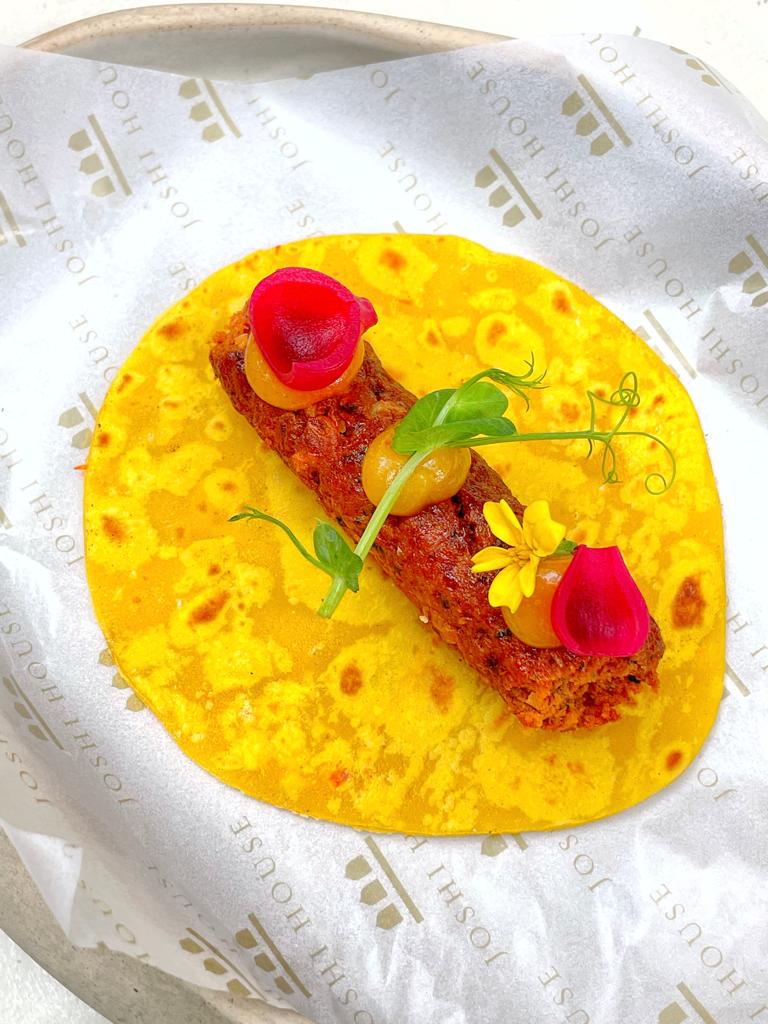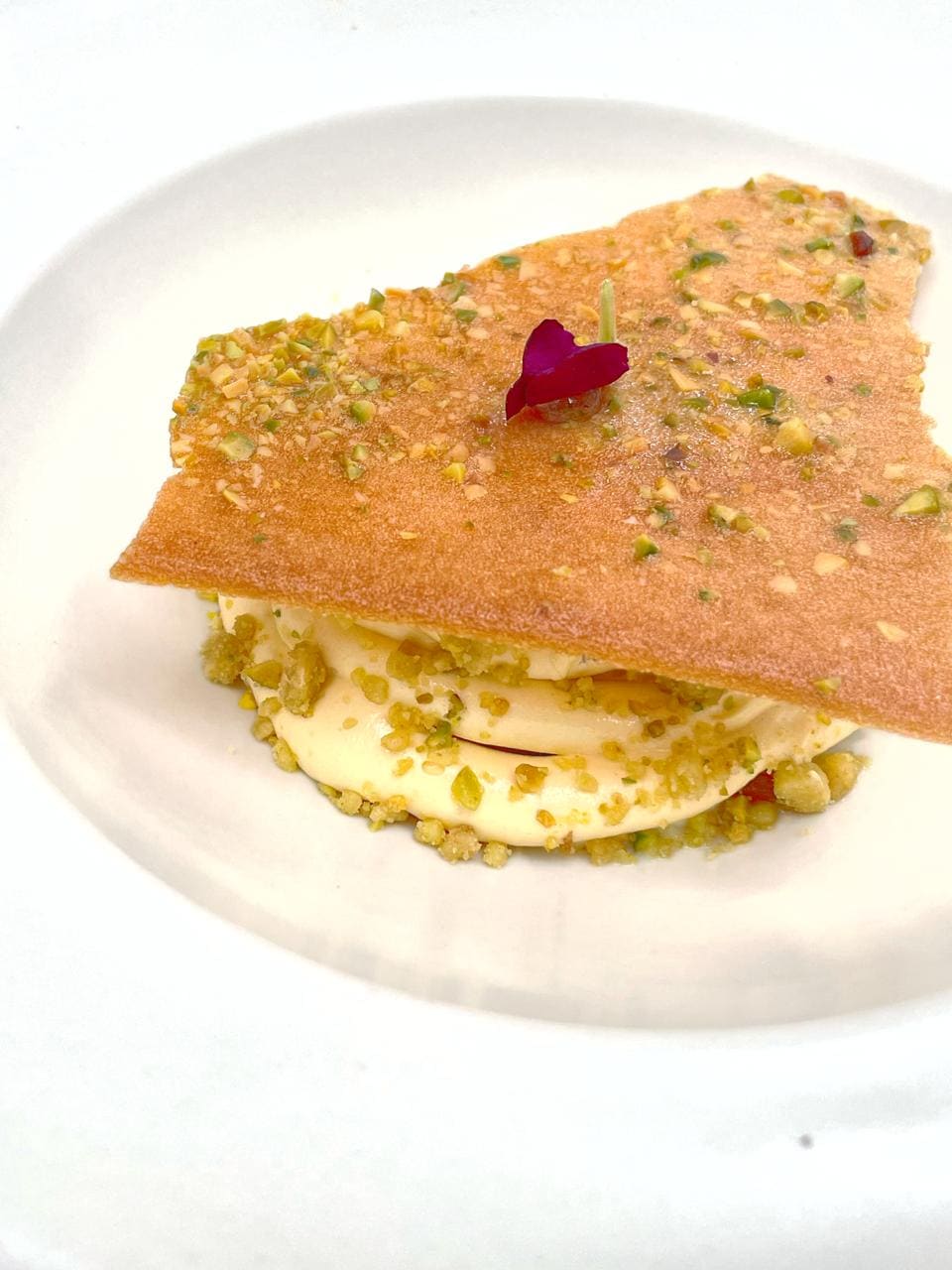One confidently attributes haute cuisine on this planet to Spanish genius Chef Ferran Adria and what cannot be denied is that his approach to cooking and his culinary algorithms, liberated the minds of chefs all over the world, emboldened them to shatter norms, and fomented a whole generation to break free and explore infinite horizons.
For a while now, Indian chefs have been trying to apply those same rules of evolution to Indian food. A towering task for anybody who wants to fool around with tastes and flavours that we are so deeply rooted in our conscience and palate. Vineet Bhatia was one of the first to try this with Indian food in his bygone London restaurant, which indeed won him a Michelin Star, and till today, at his several restaurants around the world and at Ziya at The Oberoi, Mumbai, he’s still trying to convince us, that Indian food can break the shackles of hundreds of years of tradition and still be Indian food. At around the same time, Chef Manish Mehrotra was busy creating India’s most revered restaurant – the Indian Accent.
At Ziya, Vineet, deconstructed Indian food, re-invented it with a fresh demeanour, complete with palate cleansers and paired wines. His earlier menus bewildered us with dishes like Prawn Chaat Toffee, Sesame Honeyed Cod with Mango chop-chop Kachumber, Mustard Chicken Tikka with Smoked Aubergine Raita and Spinach Thins. Hazelnut Butter Lobster with Edamame Coconut Khichdi, Turmeric Moilee. The menu keeps changing with his imagination and today has Honey Tamarind-Salmon Tikka, Wasabi Hummus, with Edamame-Radish Sundal, Ghee Mutton Roast, Spinach Upma, Soya Jaggery Tofu, and Avocado Pomegranate Chaat.

But convincing the austere and rigid Indian palate that there is life beyond Butter Chicken is indeed a gargantuan task, though it’s a little easier to do that in foreign countries, like the UK. In London, the cuisine of the sub-continent detonated about 10-15 years ago in its most legitimate and most bonafide form, albeit with fertile and vivid liberties. Take a small Lankan restaurant called “Hoppers” in London’s Soho run by Chef Karam Sethi and team, of Gymkhana London. Try their Bone Marrow Varuval with Roti (two thick logs of sawn-off bone in a spicy oily coconut sauce), the deep black Pork Kari, or their Devilled Prawns. Taste of the earth Lankan food, spiced without apology and faithful to taste. Similarly, regional Indian food detonates at Manoj Vasaikar’s India Zing at Hammersmith. Scallops in Hirwa Masala. This Indo-pacific mollusk tossed in traditional Maharashtrian green masala is taste of home in a faraway land, as is the Prawn and Aubergine Kharphatle (jumbo prawns and aubergine finished in pickle masala, with caramelized onions and tomato). Of course, the happening restaurants Dishoom and Roti-Chai have caught the fancy of locals as well, and stalwarts like Amaya and Veeraswamy will stand the test of time.
Then came along Bombay Canteen. The late Floyd Cardoz’s partnership with young Bombay boys Sameer Seth and Yash Bhanage has not only opened doors but even windows to a new order in Indian food. Lesser-known regional Indian food with techniques as new as this generation. Theplas with pork, pulled pork vindaloo tacos and pumpkin-spinach dal, Black Pepper Head-On Prawns, Arbi Tuk, Banana Leaf Wrapped Roasted Fish, Tandoori Pork Square Ribs, and Tamil Kothu Roti went on to make history. The menu keeps evolving and this season it’s slow-cooked pork belly Thukpa, Paya Soup Momos, Toor Raj Kachori with Ragda, Amchoor Chutney, and pickled Dahi, charred winter carrots with goat cheese, pickled onions and pistachios, and much more.

But this weekend, I landed up at Joshi House in Mumbai, which was hosting two marvelous chefs. Chef Suvir Saran, who’s earned a Michelin Star while demystifying Indian cuisine in America in a restaurant called American Masala, and his executive chef Vardaan Marwah. Together they did a pop-up at this fab Bandra restaurant with a menu that indeed proved that you can imaginatively generate Indian haute cuisine without a trade-off on the bare bones. A seven-course menu, starting with the all familiar Paani Puri deconstructed with strawberries, chutneys, green apples. Kheema Aloo, spicy mutton mince with a velvety mash, garnished with fine crisp salli. Prawns done Alleppey style served with Bengali Jhaal Muri. Ghee roast, lamb chops, duck seekh kebabs, and the meal culminating in a medley of mango desserts.
It was a meal that in my mind has finally put Indian food on the route to evolution.
Kunal Vijayakar is a food writer based in Mumbai. He tweets @kunalvijayakar and can be followed on Instagram @kunalvijayakar. His YouTube channel is called Khaane Mein Kya Hai. The views expressed in this article are those of the author and do not represent the stand of this publication.























